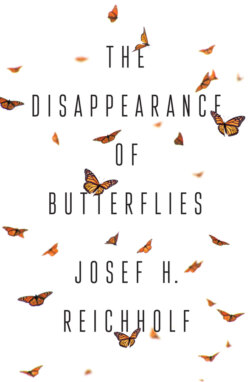Читать книгу The Disappearance of Butterflies - Josef H. Reichholf - Страница 11
Urban Lepidoptera: more common than expected
ОглавлениеIn the early 1980s, I also started to research butterfly and moth frequency in the city. Munich, the place where I had been a scientist at the Bavarian State Collection of Zoology (ZSM), offered ideal conditions for this. There were enough suitable locations from the centre to the city margins to provide a kind of cross-section of the occurrence and frequency of nocturnal insects. Moreover, the large collections present in this research museum, together with the assistance of my specialist colleagues, stood at my disposal during my endeavours to identify precisely all the insects. The fact that I would need their help became evident as soon as I started work on my first findings. They were so much more species-rich than expected that I could never have coped on my own. Furthermore, the catches turned out to be extraordinarily rich in terms of quantity, too. The widely held idea that there would only be a pitiful fraction of the species diversity found in the countryside was not only called into question by my findings, but immediately exposed as mere prejudice.
Over the years and decades, the extensive research results that I shall report in this book thus came into being. They represent the results of half a century of quantitative entomology.
Over the past half-century, nature has changed to an extent and at a speed that are simply unprecedented in such a short period. The findings are staggering and the prospects that they imply are exceptionally grim. This is because we cannot expect the main agent of this loss of species diversity – agriculture – to undergo any substantial change. Anyone who delves into the ‘agricultural problem’ in any depth will find that it has less to do with the farmers themselves than with agricultural politics. The billions of subsidies they have received over the last 50 years have resulted in a highly competitive displacement of the small-scale farms by the large ones. Traditional farmers more or less disappeared, until only a tenth of their former numbers now remain, and yet the victor in this situation, international agrobusiness – in particular, the producers of crop protection products – managed to keep a low public profile, while the decline of insects and birds proceeded in shocking parallel to the death of small-scale farm-based agriculture.
The much-maligned city life has long since become better than life in the country, where the slurry stinks to high heaven and poison is used in unprecedented quantities, and where the birds have been silenced and the groundwater is no longer fit to drink. How can things go on like this? Is it not possible to curb the spirits we once called upon in good faith to lighten the work of farmers and improve their lives? Can we even imagine a ‘butterfly effect’ that might lead to a reversal in the state of industrialized agriculture? Although it may surprise you, my outlook at the end of this book is cautiously optimistic. And yet perhaps this hesitantly expressed optimism is nothing but a dream, for future generations won’t appreciate what they haven’t come to know or experience themselves: the biodiversity of nature and our moths and butterflies.
